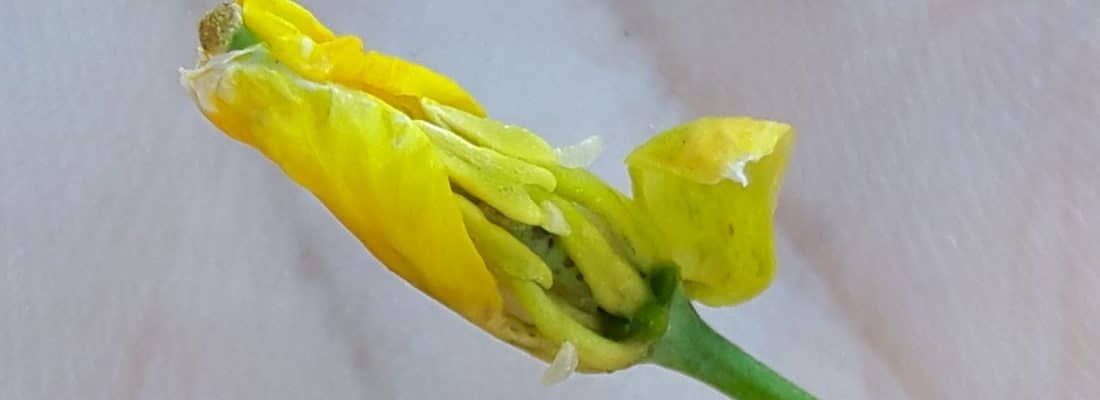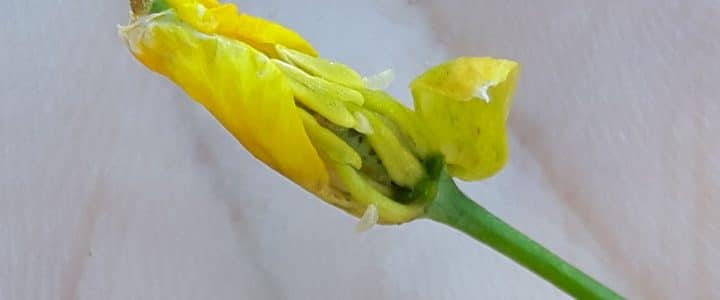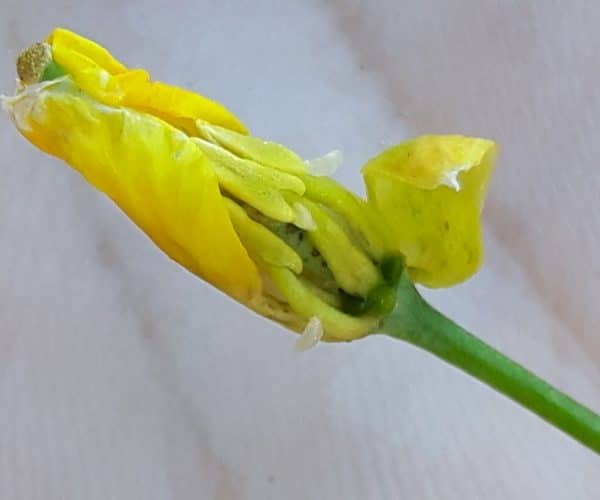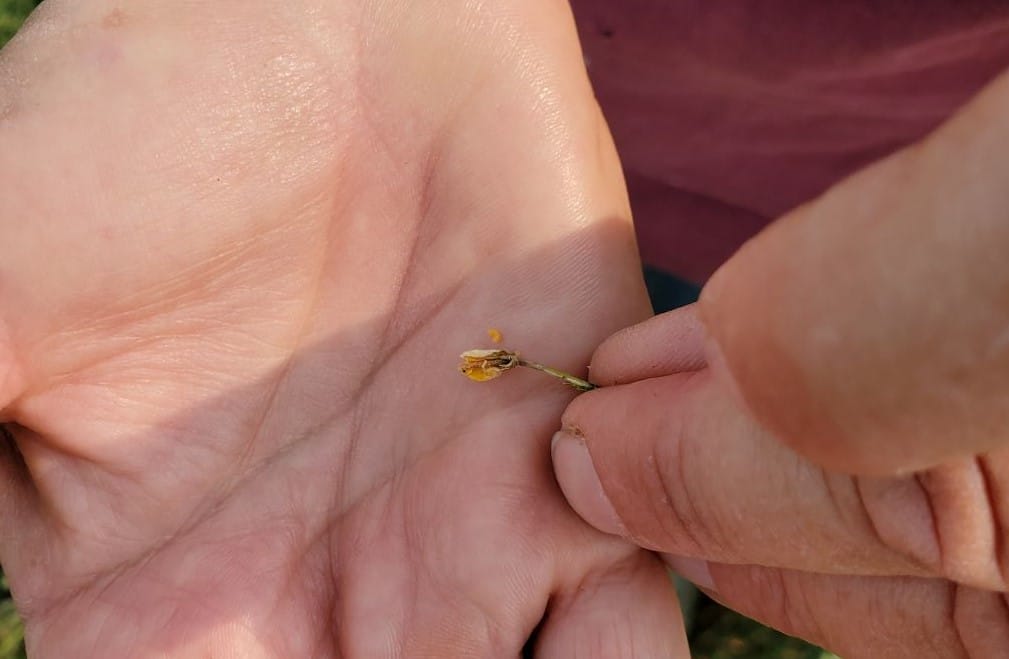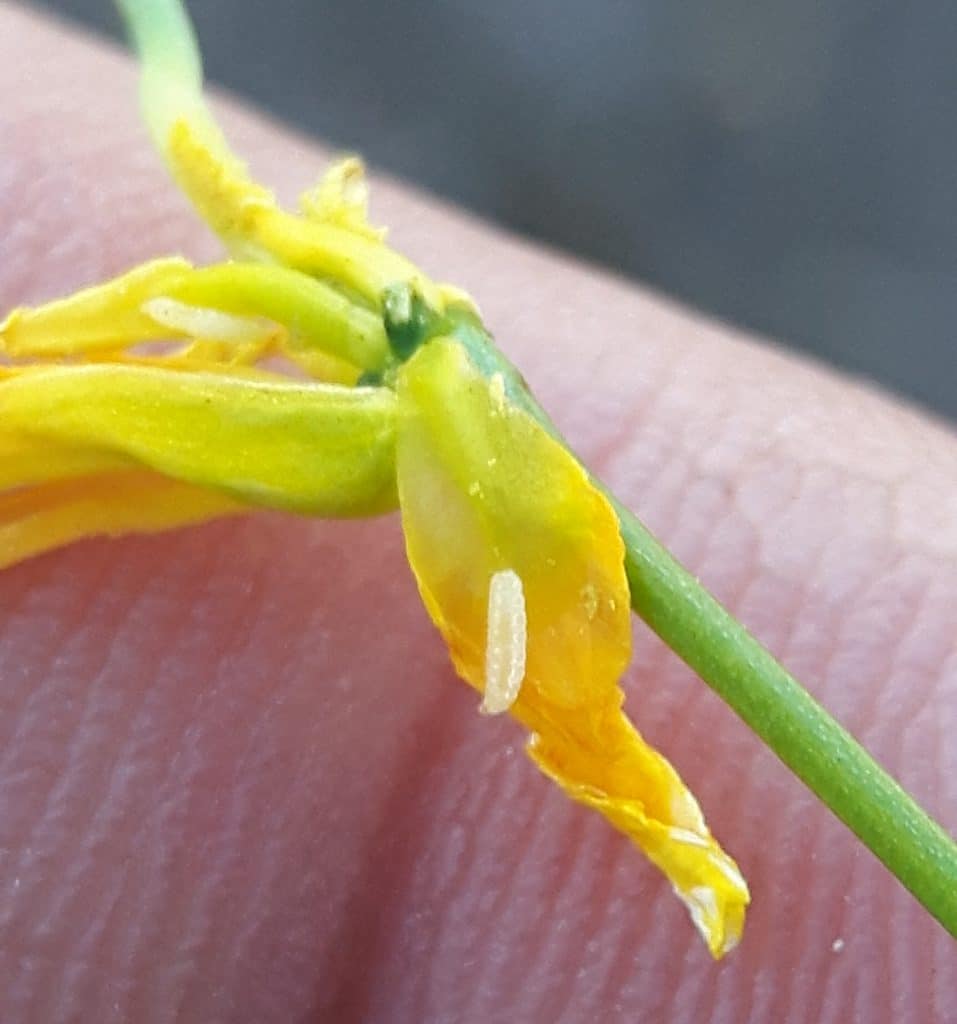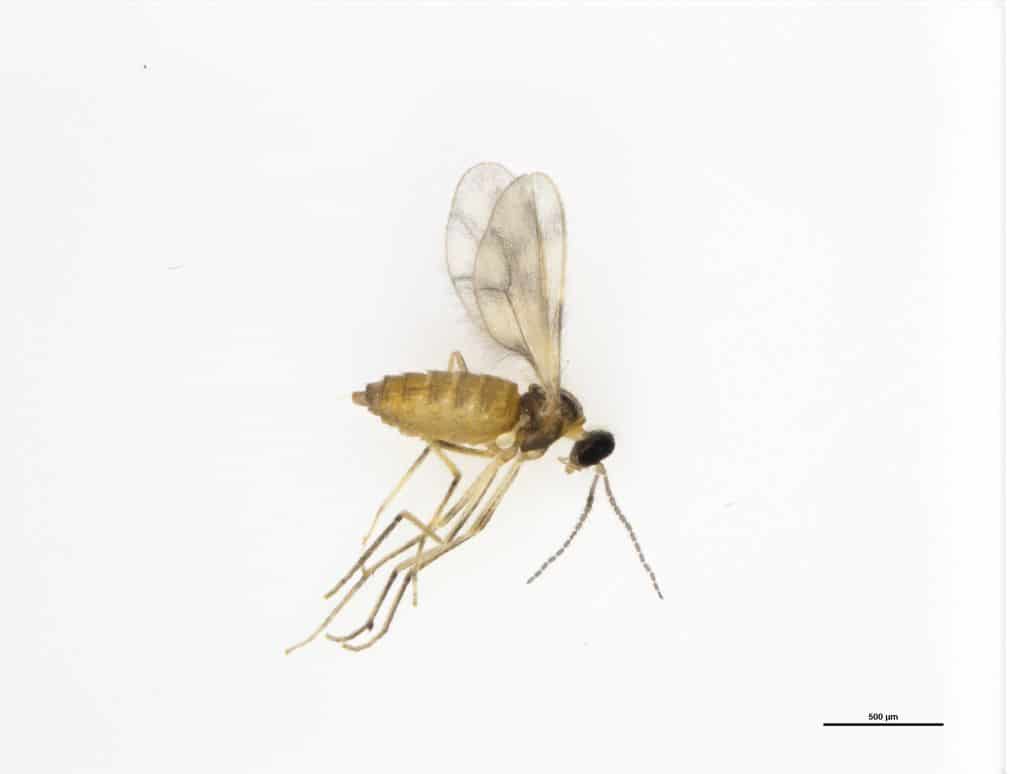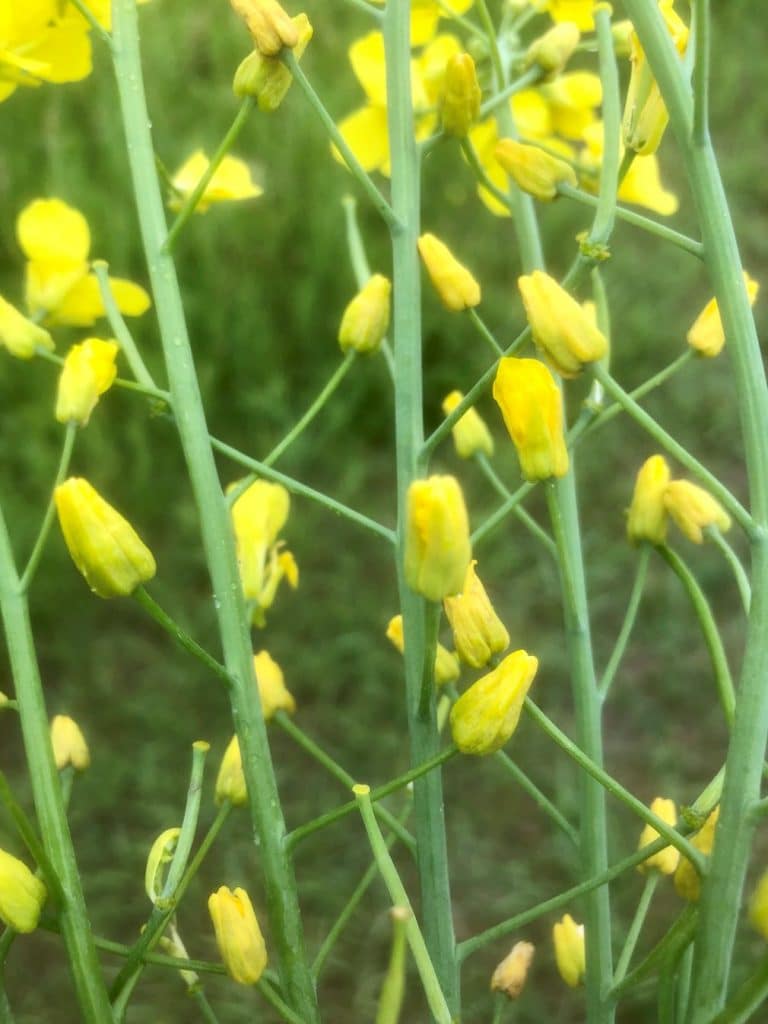The canola flower midge is a pest insect recently discovered in Western Canada. It looks very similar to the swede midge from the same genus (Contarinia). Only the larval stage causes damage to canola by feeding within unopened canola flowers which grow to form “bottle-shaped” galls instead of fully developing. Both the larvae and adult midges are very tiny, so looking for the damage caused by the larvae is the quickest way to find these insects. Further research and monitoring will be useful to develop more management recommendations and to potentially determine economic thresholds.
Important tips for best management
- Scout for this newly discovered insect in canola fields from early bud stage through harvest.
- Look for bottle-shaped galls formed from unopened flowers, as well as unusual plant structures, plant discolouration and distorted growing points. Then carefully examine inside the galls or malformed pods for larvae.
- The flying adult midges don’t cause any direct damage, but they lay their eggs in developing canola flower buds so that the hatching larvae can feed on developing flowers.
- No economic thresholdAn economic threshold is the level of infestation (ex. pest insect density) at which lost yield (ex. due to feeding/insect pest damage) exceeds the cost of the chemical and its application. More exists yet for this insect, but based on the limited available data, it isn’t currently believed to cause economic damage (however this is still being looked into).((Prairie Pest Monitoring Network. 2021. Midges in Canola (article by Meghan Vankosky, Boyd Mori and Jennifer Otani in 2021 Weekly update 11), https://prairiepest.ca/2021/week-11/#post_11571)),1,2.
Background
Canola flower midge (Contarinia brassicola) is a tiny gall midge officially identified in Western Canada for the first time in 20163. The first Canadian confirmation of this pest resulted from poor pheromone trap capture in swede midge (Contarinia nasturtii) research conducted in Saskatchewan. When these same pheromone traps were deployed in Ontario, swede midge were attracted to the monitoring traps. Closer examination showed the prairie midge specimens had hairier wings, and differences in genitalia and antennae characteristics. These physical difference and DNA sequencing information led to the confirmation of a new Contarinia midge4. In addition to Saskatchewan, survey have since been found this midge in Manitoba and Alberta as well, with some regions reporting relatively higher populations (ex. northeastern Saskatchewan)1. Although originally believed to be an invasive species, current evidence suggests this midge may be native to the area.
Biology and natural enemies
Eggs of the canola flower midge are laid in flower clusters, so that after hatching, larvae will develop enclosed within flowers. Mature larvae drop to the soil surface to pupate in cocoons before emerging as tiny adult midge (flies). Canola flower midge are believed to complete at least two generations per year in Saskatchewan3.
Host plants for this tiny fly include canola, some brassica vegetables and brassica weeds1.
Two HymenopteraThe insect order (the scientific classification more broad than Family) which includes sawflies, wasps, bees, and ants. More parasitoids of the canola flower midge have been identified with parasitism rates between 0 to 62 per cent across sites and years3.
Identifying canola flower midge and diagnosing damage
Canola flower midge larvae are initially white in color changing to darker yellow as they feed and develop. Larvae of this genus have a characteristic “spring” mechanism that allows them to jump an abnormally large distance. The larvae curl, and upon release can leap several centimeters. Identification of the tiny adult midges requires entomological training as many midge species appear similar.
The larval stage is the only stage that causes damage to canola.
Canola flower midge larvae aggressively feed within individual canola flowers and prevent these flowers from further development. The larvae secrete salivary fluids into the flower, which break down the cell walls and allow the larvae to suck up the nutrients released by the digested cells. This feeding can leave behind brown scarring, and distorts the flower shape. Therefore galled (unopened) flowers have been reported as damage symptoms on canola plants. As well, black, necroticA symptom of plant cell or plant tissue death. More feeding scars can be found on the style of the flower3. Affected flowers remain unopened with flower petals fused together, often in a bottle shape. Fused flowers may darken briefly with a light orange discoloration, later drying on the plant. The style may also protrude from the galled flower material as the base of the flower.
Although very rare and not fully understood, there were reports in 2020 of midge (which were later identified as canola flower midge) larvae found within pods in an Alberta field. Investigation into several 2021 field detections in both Alberta and Saskatchewan will may provide provide more clarity on this occurrence (and the biology of this insect to allow for larvae to be found in this location on the plant)5.
Further investigation
Research into developing pheromone trapping for this new species is in progress. The economic impact of the species is also being investigated, as two Prairie fields in 2019 may have had significant economic damage caused by canola flower midge6.
Check out the Assessing the impact of Contarinia sp. on canola production across the Prairies to learn about the distribution, life history, and biocontrol of this pest insect.
- Prairie Pest Monitoring Network. 2021. Swede midge and Canola Flower Midge: Doppleganger pests (article by Meghan Vankosky, Jennifer Otani, Erl Svendsen and Finch Van Baal in 2021 Weekly update 11), https://prairiepest.ca/2021/week-11/#post_11518 [↩] [↩] [↩]
- Prairie Pest Monitoring Network. 2018. Insect of the week – The new canola flower midge (Contarinia brassicola, Diptera: Cecidomyiidae) (article by Boyd Mori and Meghan Vankosky, in 2018 Weekly update 11), https://prairiepest.ca/2018/week-11/#post_2271 [↩]
- Mori, B. A., Andreassen, L., Heal, J. D., Dupuis, J.R., Soroka, J.J., & Sinclair, B.J. 2019. A new species of Contarinia Rondani (Diptera: Cecidomyiidae) that induces flower galls on canola (Brassicaceae) in the Canadian prairies. The Canadian Entomologist, 151(2), 131-148. doi:10.4039/tce.2018.63 [↩] [↩] [↩] [↩]
- New insect species found in canola flowers in Saskatchewan and Alberta. Meghan Vankosky, Boyd Mori. www1.agric.gov.ab.ca/$Department/deptdocs.nsf/all/prm13779/$FILE/new_canola_insect_ud.pdf [↩]
- Boyd Mori, agricultural and ecological entomology researcher, University of Alberta. Personal communication, July 2021. [↩]
- Personal communication with S. Meers and T. Wist (2020). [↩]
